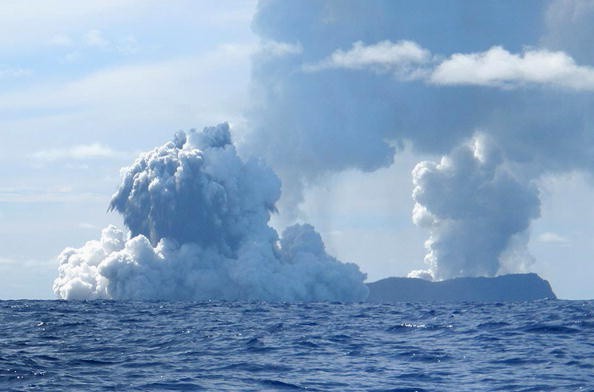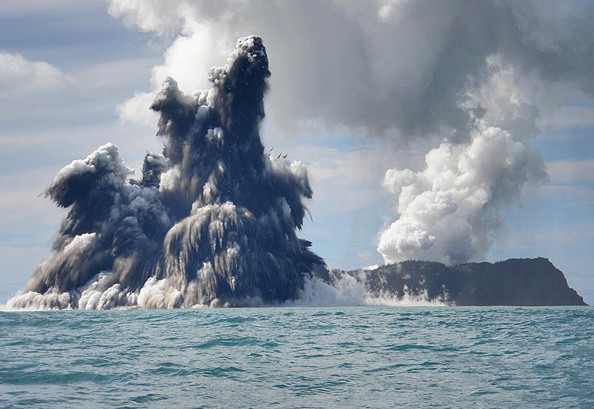She was travelling home from a vacation in Samoa when she saw it through the aircraft window - a "peculiar bulky mass" floating hundreds of kilometers off New Zealand's north coast.

Largest Underwater Volcano Eruption Ever Recorded
After the kiwi passenger sent images of the unusual ocean slick to experts, they identified it as a raft of floating rock discharged from an undersea volcano produced in the greatest eruption of its kind that has ever been recorded.
"We knew it was a large-scale eruption, approximately equivalent to the biggest eruption we've seen on land in the 20th Century," said Rebecca Carey a University of Tasmania volcanologist, who co-led the first close-up investigation of the historic 2012 eruption and eventually published the findings in a paper with colleagues in 2018.
While scientists at first failed to detect the event referred to as Havre Seamount, the floating rock platform it created was impossible to ignore, according to Science Alert.
According to information gathered from satellites, the raft, which was made of pumice, a light, air-filled volcanic rock, spanned 400 square kilometers (154 square miles) of the south-west Pacific Ocean in 2012, but it dispersed across an area twice the size of New Zealand months later.
Researchers Investigate the Underwater Eruption
When scientists investigated the site in 2015, at depths as low as 1,220 meters (4,000 feet), the sheer size of the rocky debris shocked them.
Adam Soule, a volcanologist of the Woods Hole Oceanographic Institution, said: "We knew it was a large-scale eruption, approximately equivalent to the biggest eruption we've seen on land in the 20th Century."
"It turned out that each bump was a giant block of pumice, some of them the size of a van. I had never seen anything like it on the seafloor," he continued.
The analysis, which was carried out with the AUV Sentry and the remotely operated vehicle (ROV) Jason, revealed that the eruption of Havre Seamount was more complicated than anybody on the surface ever thought.
The caldera, which spans roughly 4.5 kilometers (about 3 miles), released lava from 14 vents in a "massive breach of the volcanic edifice," resulting in pumice rock, ash, lava domes, and seabed lava flows in addition to pumice rock.
It may have been buried beneath an ocean of water, but it was around 1.5 times the size of Mount St. Helens 1980 eruption - or 10 times the size of Iceland's 2010 Eyjafjallajökull eruption.

What Happens When a Volcano Erupts Under the Sea?
According to the researchers, three-quarters or more of the debris ejected floated to the surface and drifted away, with tonnes landing up on shorelines thousands of miles away.
The remainder was dispersed around the adjacent seabed, wreaking havoc on the biological populations that called it home and are just now beginning to recover.
It's a huge, rare opportunity to study what happens when a volcano erupts beneath the sea, a phenomenon that accounts for more than 70% of all volcanism on Earth, even if it's a little harder to spot, with samples collected by the underwater generating what the scientists say could add up to a decade's worth of research.
"Underwater eruptions are fundamentally different than those on land," said one of the team members, UC Berkeley geophysicist Michael Manga.
He added, "On-land equivalents do not exist."
Related Article : Largest Underwater Eruption Gives Rise to a Massive Volcano, Prompting Researchers to Mount Expedition
For more news, updates about underwater eruption and similar topics don't forget to follow Nature World News!
© 2025 NatureWorldNews.com All rights reserved. Do not reproduce without permission.





